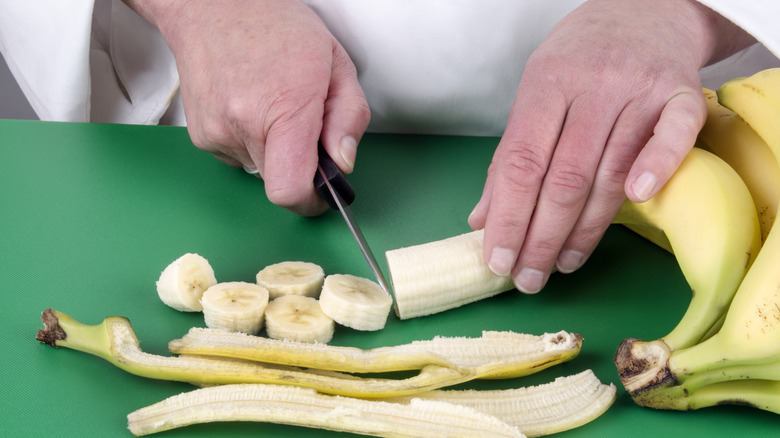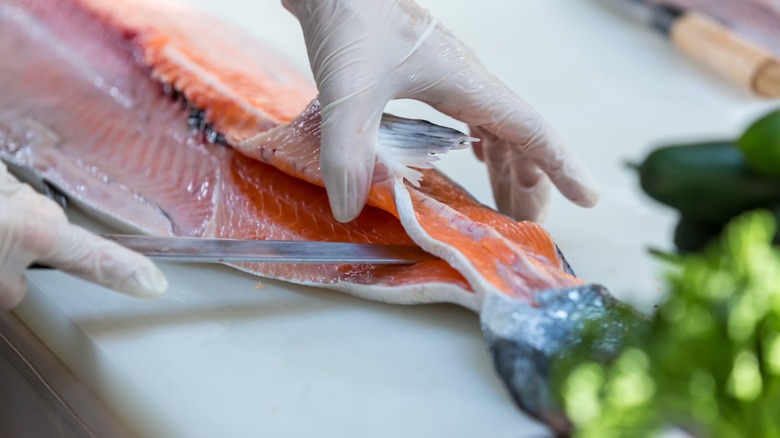Why Restaurant-Quality Cutting Boards Are Color-Coded
If you're serious about your home cooking, you've probably spent some time at a restaurant supply store wondering how much is too much to spend in one place, and the answer is already "too much." You can find sheet pans, metal mixing bowls, and any kind of dish or platter. The products are usually cheaper than going to your local Williams-Sonoma, especially for the essentials, and are super durable — they're meant to withstand heavy use in commercial and professional kitchens. You might also stumble across a rainbow of cutting boards, but they're not for using the red one on a Monday and the brown one on Thursday.
At home, you might use three or four separate cutting boards – one for veggie prep, one for raw meat or fish, another for baked goods, and perhaps one more for cutting cooked meats. Industrial and professional kitchens take sanitation very seriously — no one wants clientele getting sick from cross-contamination when harmful bacteria find their way from raw meat to fresh vegetables, and the cutting board is often the culprit. Color-coded cutting boards prevent cross-contamination by assigning ingredients different colors, i.e., you shouldn't be using the same cutting board for raw chicken and vegetables during meal prep. Professional kitchens don't have time to wash and sanitize cutting boards between meal prep steps, so having color-coded cutting boards keeps things sanitary.
Using the color-coded system at home decreases cross-contamination
Even though the USDA recommends you use one board for produce and bread and a separate one for raw meat and fish, you can also use the color-coded system at home. The colors tend to match what you use them for, so red boards are for preparing red meat, green for fruit and vegetables, yellow for raw chicken, blue for fish, white for baked goods, and brown for cooked food. It's fairly foolproof and will decrease the chances of bacteria finding their way into your dishes. If you do opt for the color-coded system, make sure you buy appropriately sized boards for your kitchen — if they can't fit in your sink or your dishwasher, they probably can't get clean enough or properly sanitized.
Restaurant-quality plastic cutting boards are made of high-quality non-porous polyethylene, so germs and bacteria from raw meat won't seep into them. They also don't absorb odors and they can be run through the dishwasher and sanitized in a bleach water solution. If you have a bamboo cutting board, the USDA recommends using hot, soapy water and air-drying or patting it dry with paper towels (dish towels can be quite germy).
A reminder, though, that cutting boards should be replaced as soon as they start to show signs of serious wear and tear; harmful bacteria can hang out in knife marks and gouges.

